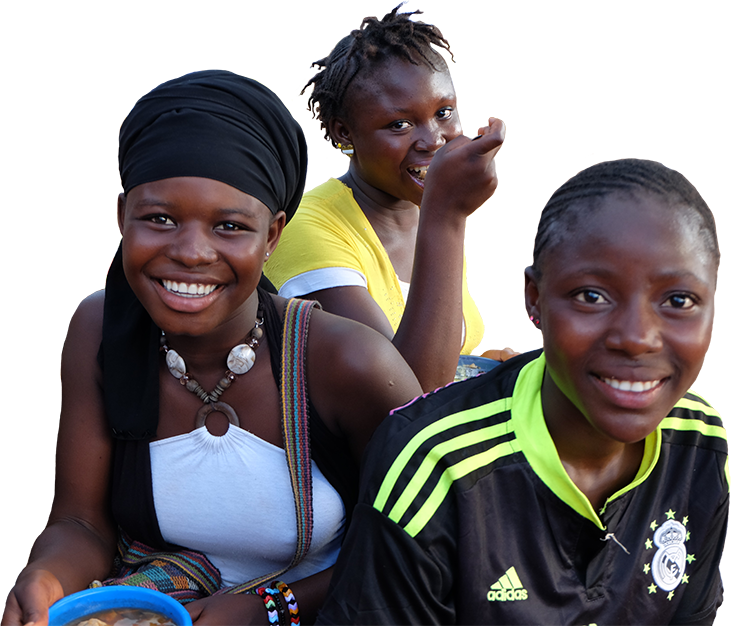Improving adolescent nutrition depends heavily on behaviors such as diet and eating practices, exercise, lifestyle, and use of health services. Social and behavior change (SBC) strategies must consider how unique structural and environmental factors that affect adolescents’ access to services and adoption of priority behaviors. Formative research, concept testing, and pre-testing of materials and approaches are needed to identify barriers and enablers to behavior change and to better understand how adolescents engage with family members, friends, teachers, health care providers, religious leaders, other community members, mass media, and social media. The Adolescent Nutrition Resource Bank includes posters, videos, counseling cards, and other SBC materials. If you have relevant SBC resources, please send them to info@advancingnutrition.org.
We found 111 resource(s)
Improving Nutrition during Middle Childhood and Adolescence by 2032: A Research Roadmap
Technical Report published by Emergency Nutrition Network (ENN) in
In 2021, Emergency Nutrition Network conducted a prioritization exercise to help set out a 10-year research agenda to support child and adolescent nutrition (5–19 years of age) in low- and middle-income countries.
Adolescent Health Club Discussion Guide
Guideline/Guidance published by USAID, Breakthrough ACTION in
The Liberia Ministry of Health and partners developed this guide for adolescent health education with support from Breakthrough ACTION Liberia. Health club supervisors and peer educators will use this guide in both communities and schools to educate young people aged 13–16 years on sexual and reproductive health. Lesson 13: Nutrition and Healthy…
VIDEO: Building the Future of Girls: Alive & Thrive Interventions to Improve Adolescent Nutrition in Ethiopia
Video/Animation published by Alive & Thrive in
These videos summarize testimonials from health workers, teachers, and adolescent students who were part of the Alive & Thrive intervention in Amhara; Somali; and Southern Nations, Nationalities, and People's regions of Ethiopia.
Nudges to Promote Healthy Eating in Schools: Policy Brief
Policy published by WHO in
This policy brief aims to increase awareness of the opportunities for promoting healthy eating in school settings and proposes action points for decision-makers to implement healthier eating in schools through the use of nudge-based interventions. Small, subtle changes to the physical and social environment can influence a child's prevailing…
Restrictions on the Marketing of Unhealthy Food and Non-Alcoholic Beverages to Children Advocacy Cartoons
Informational Infographic published by UNICEF in
These cartoons are part of a larger advocacy package developed by UNICEF to support the design, implementation, enforcement, and evaluation of various strategies aimed at ensuring a safe and healthy food environment to prevent childhood overweight and obesity.
UNICEF Technical Note: Effective Regulatory Approaches to Protect, Support, and Promote Better Diets and Create Healthy Food Environments for Children
Technical Report published by UNICEF in
This UNICEF technical note details effective approaches that various countries and development partners can use to protect, support, and promote better diets and to create healthy food environments for children.
"Vida Saludable": Healthy Living is on the School Curriculum in Mexico
Journal Article published by Emergency Nutrition Network (ENN) in
Vida Saludable, an initiative led by the Government of Mexico, aimed to reduce the incidence of obesity in adolescents and school-going children in the country. As part of this initiative, the government introduced a new subject to the curriculum called Healthy Living, offered training to teachers, and implemented the program in an innovative way…
Improving Adolescents’ Food Choices: Learnings from the Bhalo Khabo Bhalo Thakbo (“Eat Well, Live Well”) Campaign in Bangladesh
Journal Article published by Emergency Nutrition Network (ENN) in
The Bhalo Khabo Bhalo Thakbo campaign was a nationwide initiative launced by the government in collaboration with GAIN to promote adolescent engagement to improve the consumption of healthy meals by utilizing social media.



